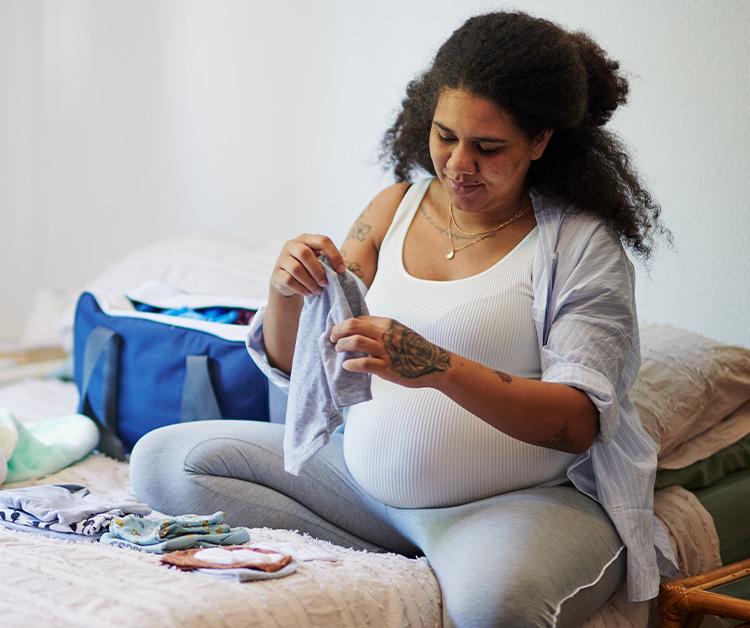Due to maintenance, rewards points for receipt uploads will be delayed. Thank you for your patience!

You’re in the home stretch of pregnancy! Your belly is popping, and your heart is swelling in anticipation of the day you’ll hold your little one in your arms. This third trimester guide looks at what your baby and your body are up to during this final pregnancy phase.
The third trimester starts around week 28, approximately 26 weeks after conception. It spans about 13 weeks (pregnancy months seven through nine) and ends on the day of your baby’s arrival! Timelines can vary from baby to baby, and while your doctor can give you a good idea of when to expect your little one, don’t be surprised if your baby decides to run on their own schedule!
There’s a lot of growth and development going on beneath that bump that may seem to be expanding endlessly. Hang in there. You’re almost at the finish line!
This last leg of your pregnancy can bring a mix of excitement, nervousness, and exhaustion. Here are some things to check off your to-do list as your pregnancy journey winds down and the wondrous new one of parenthood begins.
Watch for labor indicators. It’s almost time to meet your little one. Keep an eye out for the following:
Think you’re going into labor? Not quite sure? Call your doctor right away.
Try to de-stress. As your due date approaches, it’s natural to be a bit anxious. Meditating, deep breathing exercises, talking to family and friends, taking a walk, and other stress-reducing strategies can help promote calm.
Celebrate at your baby shower. It’s your day! Savor being the center of attention. Take plenty of pics and cherish all the joyful memories you’ll be able to share with your child someday. And since life is about to get pretty busy, try to send your thank you notes shortly after your celebration.
Find a pediatrician. Ask family and friends for recommendations, inquire about health insurance, verify credentials and experience, and meet with potential candidates to establish if they’ll be a good match for you and your newborn’s needs.
Increase doctor check-ins. Many women have biweekly checkups from weeks 28-36 and then weekly appointments until delivery.
Keep crushing that healthy eating. Your baby needs B vitamins, iron, calcium, omega-3 fatty acids, zinc, and other important nutrients for their healthy development. Proper hydration is also key for you and your baby’s health and can also help reduce constipation.
Start birthing classes. The third trimester is a great time to take a birthing class. A class can help you prepare for labor, delivery, and breastfeeding and ease some anxiety. It’s also an opportunity to meet other new expectant parents and share your concerns.
Gear up on baby gear. As any new parent will tell you, babies require a lot of stuff. Now is the time to shop for those newborn must-haves, from strollers, car seats, and baby monitors to adorable nursery decor. A tip: Shop after your shower since you may receive a lot of what’s on your registry.
Pack for the hospital. Plan for your hospital stay by packing a bag with comfy clothes, PJs, slippers, nursing items, toiletries, and personal care products that can help you feel like yourself.
References:
All information on Enfamil.com, including but not limited to information about health, medical conditions, and nutrition, is intended for your general knowledge. It is not a substitute for a healthcare professional's medical identification, advice, or management for specific medical conditions. You should seek medical care and consult your doctor, OB-GYN, or pediatrician for any specific health or nutrition issues. Never disregard professional medical advice or delay seeking medical care because of something you have read on Enfamil.com.
All information on Enfamil, including but not limited to information about health, medical conditions, and nutrition, is intended for your general knowledge and is not a substitute for a healthcare professional's medical identification, advice, or management for specific medical conditions. You should seek medical care and consult your doctor or pediatrician for any specific health or nutrition issues. Never disregard professional medical advice or delay seeking medical treatment, care, or help because of information you have read on Enfamil.